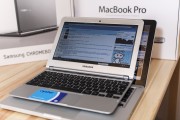If you’re following the news, there have been a few comments in the past days from PC manufacturers regarding the allegedly poor sales of the new Win8. Furthermore, if you read some of the typical new year’s predictions articles regarding gadget usage for 2013, it’s a common thing to find that experts are predicting the continuing falling sales of PCs, and perhaps the sales of a few manufacturing organisations/departments (ie. companies quitting the market).
What many writers ignore to notice (I’m not saying they fail to, after all it should be their area of expertise…) is that people don’t need personal computers. Not even if HP would love to make them personal again. For the time being, I’m talking about households, not companies, that’s a different business, and I’m pretty sure that Dell and some of the others are doing okay in their corporate sectors. But there are two (three, four?) aspects to consider when looking at home PC usage:
- the why,
- the performance,
- and for some people also mobility
- and interconnectivity (not just in terms of cables.).
 So why then? Most people aren’t working professionally in their homes on their computers, and even if so, they aren’t doing hardcore, CPU-heavy stuff. I’ll discount gaming from here for the time being. I’m sure I could get some statistics for this, but it’s in the morning and I’m sleepy, yet, out of my 700 so-called friends on Facebook, only about 10-20 of them are coders/designers/music people that do stuff on their home machine. Most of them have Macs, though they don’t tend to live in the USA. The other 680-odd people need their device for basic tasks, such as browsing, typing up stuff, occasionally watching videos (not everyone), and so on. Especially with the dawning of free internet file and media storage (dropbox, flickr, picasa, yt etc), there is now limited need for devices with a lot of HDD space. Devices can and do upload stuff directly to the internet, without intermediaries.
So why then? Most people aren’t working professionally in their homes on their computers, and even if so, they aren’t doing hardcore, CPU-heavy stuff. I’ll discount gaming from here for the time being. I’m sure I could get some statistics for this, but it’s in the morning and I’m sleepy, yet, out of my 700 so-called friends on Facebook, only about 10-20 of them are coders/designers/music people that do stuff on their home machine. Most of them have Macs, though they don’t tend to live in the USA. The other 680-odd people need their device for basic tasks, such as browsing, typing up stuff, occasionally watching videos (not everyone), and so on. Especially with the dawning of free internet file and media storage (dropbox, flickr, picasa, yt etc), there is now limited need for devices with a lot of HDD space. Devices can and do upload stuff directly to the internet, without intermediaries.
As much as I personally don’t fancy the Chromebook because I do have a tendency to store 1TB of HD films and 115G of my own photos on my PC, the average user could actually well do with a Chromebook-style device. Tiny SSD to boot the OS quickly, and do everything online. No massive storage in the computer. For now, the platform isn’t there yet, given the lack of free wifi and black spots on the 3G coverage in parts of countries, but it will be there soon. Gamers are a bit of a different cup of tea, but face it, there have been strong pushes from Microsoft and Sony to convert gamers to the console market, with decent success.
 Performance: for tasks like those above, nobody really needs an Ultrabook with an i7-3xxx. Intel is very keen to replicate the success of the Macbook/Pros but it will not happen as long as Apple products are chic to have, rather than being looked at as ridiculously expensive devices that restrict the user into a specific software environment and provide performance that the majority of people don’t even comprehend. Hands up, how many Mac users know the difference between an i5 and an i7? 2nd and 3rd-gen differences? Whoa. What’s a CPU? I’m not saying this is bad, from a marketing point of view, certainly for Apple, this is epic great.
Performance: for tasks like those above, nobody really needs an Ultrabook with an i7-3xxx. Intel is very keen to replicate the success of the Macbook/Pros but it will not happen as long as Apple products are chic to have, rather than being looked at as ridiculously expensive devices that restrict the user into a specific software environment and provide performance that the majority of people don’t even comprehend. Hands up, how many Mac users know the difference between an i5 and an i7? 2nd and 3rd-gen differences? Whoa. What’s a CPU? I’m not saying this is bad, from a marketing point of view, certainly for Apple, this is epic great.
The bottleneck in performance for years now have been the HDD in any decent personal computer. Strictly speaking of HDDs, their average read/write speeds are about 10-20 megs/sec because rather than really queuing those commands, HDDs are doing everything at the same time, slowing down to a grinding halt. Nobody cares if a SATA2-compatible device’s max speed is hundreds of megs per sec if that never happens. As long as computer manufacturers keep charging extortion-like amounts for SSDs that can otherwise be bought off eBay for less than half that much, and users aren’t educated about why say a Samsung 830 series device is actually good for them, they will only see that it takes a minute to launch the OS + Word on their PC and it takes 3 seconds to wake the tablet and open some word processor.
Tablets and higher-priced phones (SGS2/3, Note 1/2 and equivalents) are very good at providing the sort of performance that users really need. This, coupled up with fast internet services (provision) are likely to cover the needs of most typical PC user.
Mobility: desktop computers aren’t massively mobile, that’s probably not new news to anyone. Laptops are somewhat better, and the dawn of tablets had a good push on battery life for laptops too. There is now a need for devices that can play films while you’re flying from London to LA. Most ordinary computers fail at this, but many tablets don’t. Again, for someone who needs to render 3D, they will most likely need a solution that is less mobile and more workstation-like, so they are a different lot.
Interconnectivity: not just in terms of cables. Yes it’s very important for many people that they can hook up their cameras to their iPads (assuming they still use cameras), which is something that tablets aren’t really good at. This is due to marketing and is something I do hate, but then I don’t have a tablet. What these devices are good at on the other hand is synchronizing data between locations. Dropbox app, this-app, that-app. Needless to say. Many now offer offline/delayed data sync features, and the user can have their stuff backed up or distributed easily in minutes. Mums don’t need a lot more than that when it comes to gadgets.
+1: price: Kudos to Google on this one but now that decent tablets are in the <$200 range, there is really a limited reason why people would want a PC. Even for those who like big monitors and keyboards, there are solutions that cost a lot less than a computer. The problem with Microsoft’s new Win RT series is that they are ludicrously expensive, and again feature hardware that most people don’t need. Worst of all, it’s Windows, and it’s not compatible with most of the old Windows software. Kapisch?
In other words: It’s not an end, it’s an evolution. Personal computers served a need for a long time and since most users didn’t build their own devices, they were bound to what they were given, without neither understanding the underlying hardware issues, nor caring about them, nor having a solution to them. (sticking to the HDD/SSD issue as an example). PCs are a bit like many other things used by mankind in the past. Yes we had horse-drawn carriages that changed humanity (transport, logistics), yes we had film cameras, and yes we have PCs. There are a few film cameras and traditional means of transportation still in existence, just as PCs won’t die out completely, but home usage is shifting. The corporate lot is a different story entirely.
51.500152
-0.126236





